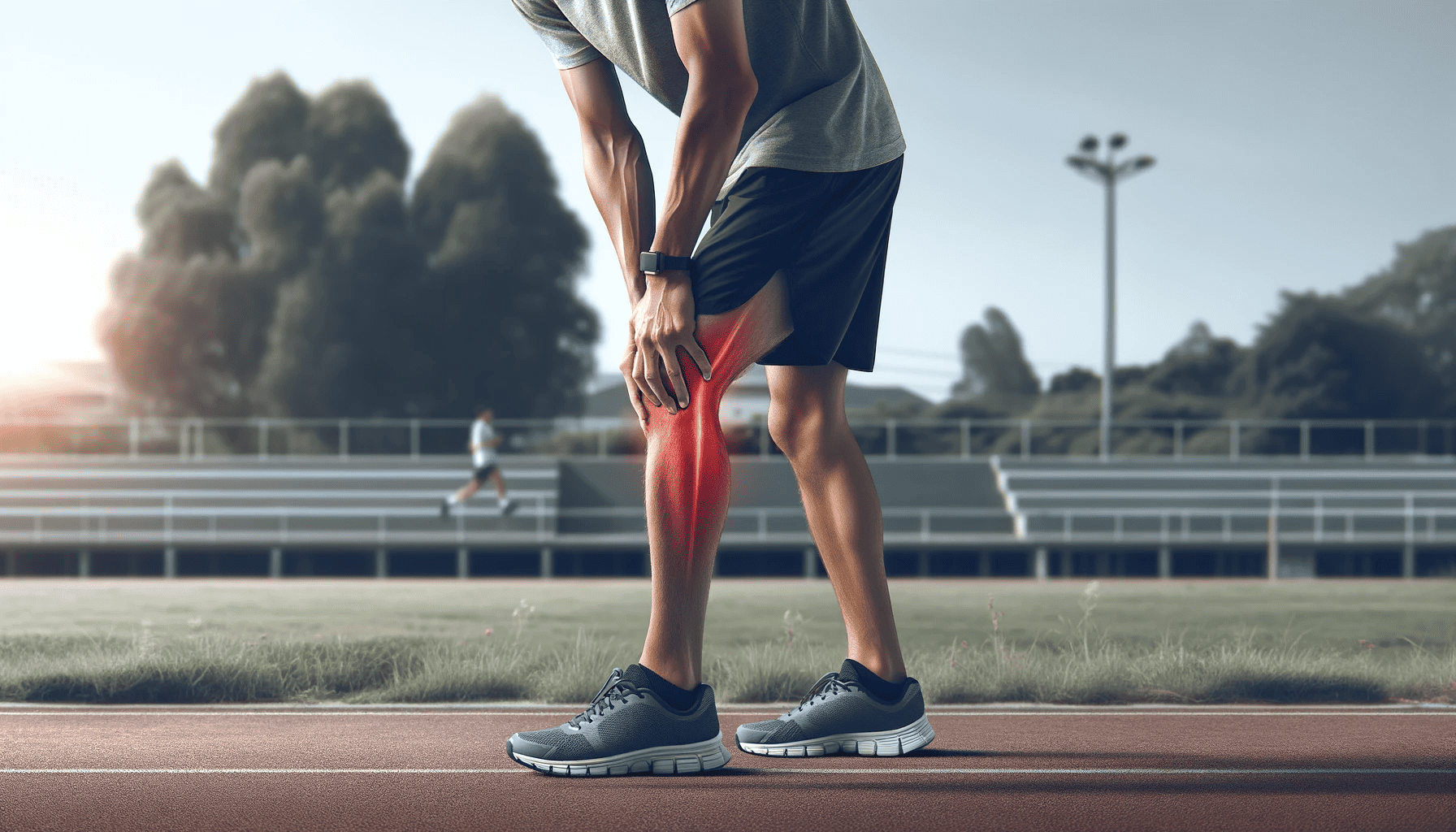
Are you suffering from hip bursitis and tired of feeling sidelined by hip pain whenever you try to exercise? Do you struggle to maintain your fitness routine due to the constant discomfort in your hip joints? Don’t worry. It is possible to exercise with hip joint pain or bursitis, and doing the right exercises can be used to reduce pain and help in treating hip bursitis.
It’s time to exercise smarter, not harder! We’ll show you the exercises to avoid to ensure you aren’t aggravating your hips and give you the tools to maintain a healthy exercise routine. Say goodbye to frustrating flare-ups and hello to a pain-free workout with our ultimate guide to avoiding hip pain.
What is Hip Bursitis? Say Hello to Your Hip's Worst Enemy
Hip bursitis is a condition that occurs when the bursae, tiny fluid-filled sacs that cushion the hip joint, become inflamed. This inflammation can cause pain, stiffness, and discomfort in the hip joint, making it difficult to move and engage in daily activities. While it can affect individuals of all ages and fitness levels, it’s most common among middle-aged and older adults, especially active ones.
The causes of hip bursitis can vary but often involve repetitive motions or prolonged pressure on the hip joint. Activities such as running, cycling, and sitting for extended periods and medical conditions such as rheumatoid arthritis and gout can increase the risk of developing hip bursitis.
If you’re experiencing hip pain or discomfort, seeking professional medical help is important. Your healthcare provider can diagnose bursitis and develop treatment options tailored to your needs. By understanding the causes and symptoms of hip bursitis, you can take steps to prevent bursitis or further injury and promote healing. Say hello to your hip’s worst enemy, but don’t let hip bursitis hold you back from living your best life.
Protecting Your Hips: The Dos and Don'ts of Hip Bursitis Pain Management
Hip pain from bursitis can be a frustrating and debilitating condition affecting many individuals, especially active ones who love to exercise. However, managing hip pain doesn’t have to mean giving up on your fitness goals. By understanding the dos and don’ts of exercising with hip pain, you can take control of your condition and promote healing.
We explore various strategies for managing bursitis pain, including exercises to avoid it, stretches to promote healing, and healthy ways to increase hip strength. We’ll delve into specific movements and postures that can harm the hip joint, such as high-impact activities, hip-opening stretches, deep squats and lunges, and cross-legged sitting. We’ll also discuss the importance of rest and recovery and how overtraining and ignoring pain signals can hinder recovery.
By following these dos and don’ts of hip bursitis pain management, you can take an active role in your recovery and maintain a healthy lifestyle.
How Weight-Bearing Exercise Can Aggravate Hip Bursitis?
While staying active is essential for overall health, specific exercises can worsen the symptoms of hip bursitis. In particular, weight-bearing activities can stress the hip joint and aggravate inflammation in the bursa.
Weight-bearing exercises involve supporting your body weight on your legs or feet. This can include activities such as running, jumping, or weight lifting. These exercises can be particularly challenging for individuals with hip bursitis because they can exacerbate pain and inflammation in the hip joint. It’s important to modify or avoid these exercises until the bursitis has healed, to avoid further damage to the hip joint.
Why Running and Jumping Might Not Be Your Hip's Best Friends?
While running and jumping may be great ways to get your heart rate up and burn some calories, they can be detrimental to those with hip bursitis. The high-impact nature of these activities can put a lot of pressure on the hip joint, causing pain and inflammation and further aggravating hip bursitis. The repetitive motion can also exacerbate any existing injuries or conditions in the hip area.
Instead, opt for low-impact exercises such as swimming or walking. These exercises can provide an effective workout without putting undue stress on your hip joint, allowing you to stay active and maintain your fitness routine without causing further damage.
Sweat it Out: The Impact of Cardio Machines on Hip Bursitis
While cardio machines can be a great way to stay in shape, they can also significantly strain the hips and exacerbate hip problems. The most common cardio machines include treadmills, stationary bikes, and ellipticals, all involving repetitive, weight-bearing movements that can stress the hips. This added pressure can increase inflammation, pain, and discomfort for those with hip bursitis. However, there are ways to modify your cardio workouts to make them hip-friendly and avoid further aggravation of this condition.
Deep Squats and Lunges: Are These Popular Exercises Secretly Sabotaging Your Hips?
Deep squats and lunges target the lower body and are often included in many workout routines. However, these exercises can exacerbate hip bursitis pain and cause severe pain in the hip joint. The deep squatting motion places a lot of stress on the hip joint, which can cause inflammation, pain, and further damage to the bursae.
But don’t worry, that doesn’t mean you have to skip leg day altogether. Plenty of modified versions of these exercises can still provide an effective lower-body workout without causing pain or discomfort in the hip joint. Shallow squats, for example, can target the same muscle groups as deep squats without putting undue stress on the hip joint. Step-up lunges with shorter strides and resistance band exercises can also provide an effective workout without causing further damage to the hip joint. Remember, it’s all about finding the right balance between working out and preventing further injury. So, ditch the deep squats and lunges and try some modified exercises to keep your lower body strong and healthy.
Hip Extensions and Abductions: Don't Let Hip Bursitis Hold You Back From Your Glute Goals
Hip extensions and abductions target the gluteal and hip muscles, making them an essential part of many lower-body workout routines. However, these exercises can aggravate hip bursitis pain and cause discomfort in the hip joint if done incorrectly. Overextending the hip joint can cause further damage to the bursae and increase inflammation and pain.
Luckily, there are ways to modify these exercises to make them more comfortable for those with hip bursitis. When performing hip extensions and abductions, focus on controlled movements that don’t cause discomfort. Avoid overextending the hip joint, and pay attention to your body’s signals to avoid causing further damage. Modified versions of these exercises, such as clamshells or bridges, can provide an effective workout without putting undue stress on the hip joint. Resistance bands can also add a challenge to these exercises while maintaining control and reducing the risk of injury.
Why Overtraining is Hindering Your Hip Bursitis Recovery
Overtraining can be a common mistake many people make when trying to improve their fitness, but it can also harm those with hip bursitis. Overworking the hip joint can cause further damage and slow the healing process. Overtraining can exacerbate pain and inflammation, causing further damage to the hip joint.
It’s important to remember that rest and recovery are just as important as exercise when healing hip bursitis. Taking the time to rest and recover can be crucial to achieving your fitness goals. By giving your body the time it needs to heal, you can come back stronger and reach your fitness goals without causing further damage to your hip joint.
How Ignoring Your Body's Signals Can Sabotage Your Hip Bursitis Recovery
When it comes to bursitis symptoms and pain, ignoring your body’s signals and pushing through discomfort can do more harm than good. Pain is your body’s way of telling you something is wrong, and ignoring it can exacerbate existing injuries or cause new ones. While it may be tempting to push through the pain and keep up with your exercise routine, listening to your body and taking a break if necessary is essential.
Ignoring pain signals can also cause further damage to the hip joint, leading to prolonged healing time and increased discomfort. It’s important to recognize the difference between discomfort and pain and be mindful of your body’s limitations. It’s okay to take a break or modify your exercise routine to avoid causing further damage to your hip joint. Your health and well-being should always come first; pushing through pain can do more harm than good.
The Key to Alleviating Hip Bursitis Pain and Promoting Healing
Hip bursitis pain can be debilitating, but the good news is that there are ways to alleviate discomfort and promote healing. In this section, we’ll explore the key to unlocking hip bursitis pain relief and promoting healing through a combination of physical therapy and targeted exercises.
How Physical Therapy Can Help Alleviate Hip Bursitis Pain and Promote Healing
Physical therapy can be a highly effective treatment option for those suffering from hip bursitis. A physical therapist can work with you to develop a customized treatment plan that addresses your specific symptoms and goals. Physical therapy can help alleviate pain and inflammation in the hip joint, improve flexibility and range of motion, and prevent further injury.
During physical therapy sessions, you may engage in a variety of exercises and stretches designed to promote healing and reduce pain. Your physical therapist may also use manual therapy techniques to manipulate the hip joint and surrounding muscles, promoting blood flow and reducing inflammation. Additionally, your physical therapist may teach you proper body mechanics and techniques for avoiding further injury to the hip joint.
Physical therapists can also provide valuable emotional support as you navigate the challenges of hip bursitis pain. They can help you stay motivated and provide encouragement as you work towards your recovery goals. Overall, physical therapy can be an effective and holistic treatment option for those with hip bursitis, helping you get back to the activities you love with reduced pain and improved mobility.
Exercises and Stretches to Alleviate Hip Pain from Bursitis and Promote Healing
When managing hip bursitis pain, targeted exercises can be beneficial. You can reduce inflammation and pressure on the affected area by strengthening the muscles surrounding the hip joint and improving flexibility. This section will explore some effective hip bursitis exercises to alleviate pain and promote healing.
Low Impact Exercises
Low-impact exercises can also be a great option for managing hip bursitis pain. These exercises are gentle on the joints and can help improve cardiovascular health without putting excess stress on the hips.
Here are some low-impact exercises to consider:
- Walking: Walking is a low-impact exercise that can help improve cardiovascular health and strengthen the muscles surrounding the hip joint. Start with short walks and gradually increase your distance and speed as you feel more comfortable.
- Swimming: Swimming is a great option for low-impact exercise as it provides a full-body workout without putting pressure on the joints. The buoyancy of the water can also help reduce inflammation and alleviate pain.
- Yoga: Yoga is a gentle form of exercise that can help improve flexibility, balance, and strength. Look for classes or videos on hip-opening poses and modifications to avoid aggravating hip bursitis pain.
- Targeted Exercises and Stretches: When managing hip bursitis pain, targeted exercises and stretches can be beneficial. You can reduce inflammation and pressure on the affected area by strengthening the muscles surrounding the hip joint and improving flexibility.
Hip Bursitis Stretches
Here are some hip bursitis exercises and stretches to consider:
- Clamshells: Clamshells are a simple yet effective exercise that can help strengthen the gluteus medius muscle, which stabilizes the hip joint. To do clamshells, lie on your side with your knees bent at a 90-degree angle. Keep your feet together and lift your top knee while keeping your heels together. Lower your knee back down and repeat for 10-15 reps on each side.
- Glute bridges: Glute bridges can help activate the gluteus maximus muscle, which can help alleviate pressure on the hip joint. To do glute bridges, lie on your back with your knees bent and feet flat on the ground. Lift your hips towards the ceiling, squeezing your glutes at the top of the movement. Lower your hips back down and repeat for 10-15 reps.
- Step-ups: This exercise targets the glutes and quadriceps, which can help support the hip joint and reduce pressure on the bursa. To perform step-ups, stand in front of a step or platform and place one foot on top of it. Push through your heel to lift your body onto the step, then lower back down and repeat for several reps before switching sides.
- Wall sits: This exercise targets the quadriceps and glutes, which can help improve hip stability and reduce pressure on the bursa. Stand with your back against a wall and lower your body until your knees are bent at a 90-degree angle to perform a wall sit. Hold this position for several seconds before standing back up and repeating for several reps
- Hip flexor stretch: Tight hip flexors can contribute to hip bursitis pain, so stretching them out can be helpful. To do a hip flexor stretch, kneel on one knee with the other foot flat on the ground in front of you. Keeping your back straight, lean forward slightly until you feel a stretch in the front of your hip. Hold for 30 seconds and repeat on the other side.
- IT band stretch: The IT band is a long band of tissue that runs along the outside of the thigh and can contribute to hip bursitis pain if tight. To stretch the IT band, stand with one foot crossed over the other and reach towards the foot of your crossed leg, feeling a stretch along the outside of your leg. Hold for 30 seconds and repeat on the other side.
- Supine hip stretch: Lie on your back with your knees bent and feet on the ground. Cross your right ankle over your left knee and gently pull your left knee towards your chest. Hold for 30 seconds and switch sides.
- Standing quad stretch: Stand with your feet hip-width apart and gently bend your left knee, bringing your heel towards your buttocks. Hold your left ankle with your right hand and gently pull towards your buttocks. Hold for 30 seconds and switch sides.
- Seated figure-four stretch: Sit on the ground with your legs extended in front of you. Cross your right ankle over your left knee and gently pull your right knee towards your chest. Hold for 30 seconds and switch sides.
Incorporating these exercises into your routine can help promote healing and alleviate hip bursitis pain. Remember to start slow and listen to your body, taking breaks or modifying exercises as needed.
Taking Charge of Your Hip Bursitis Recovery
Hip bursitis can be challenging and frustrating, making exercise difficult. You can promote healing and alleviate discomfort by taking an active role in your recovery. Ensure you’re following the dos and don’ts of hip bursitis pain management: avoid exercises that put added stress on the hip joint and aggravate inflammation in the bursa, incorporate low-impact exercises and stretches, listen to your body and be mindful of your limitations and seek out a physical therapist for added help. You can take charge of hip bursitis treatment, and with time, patience, and dedication, you can get back to the activities you love.



